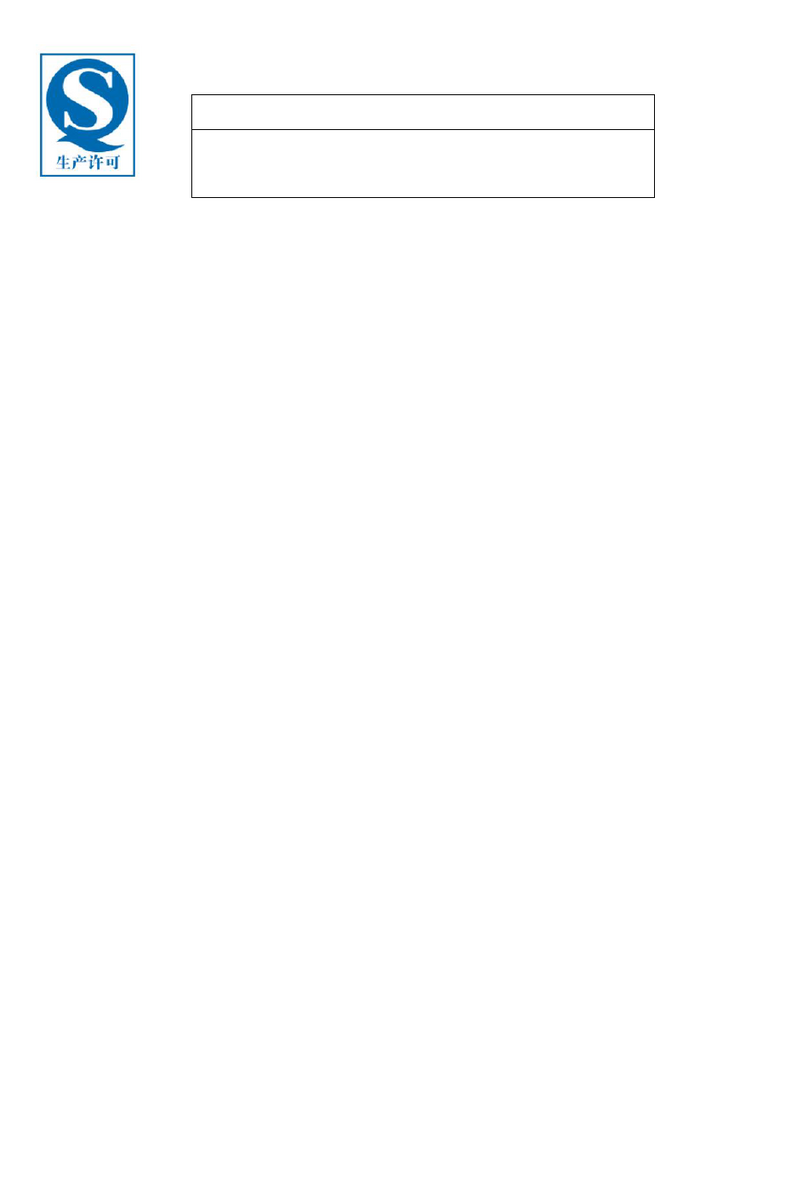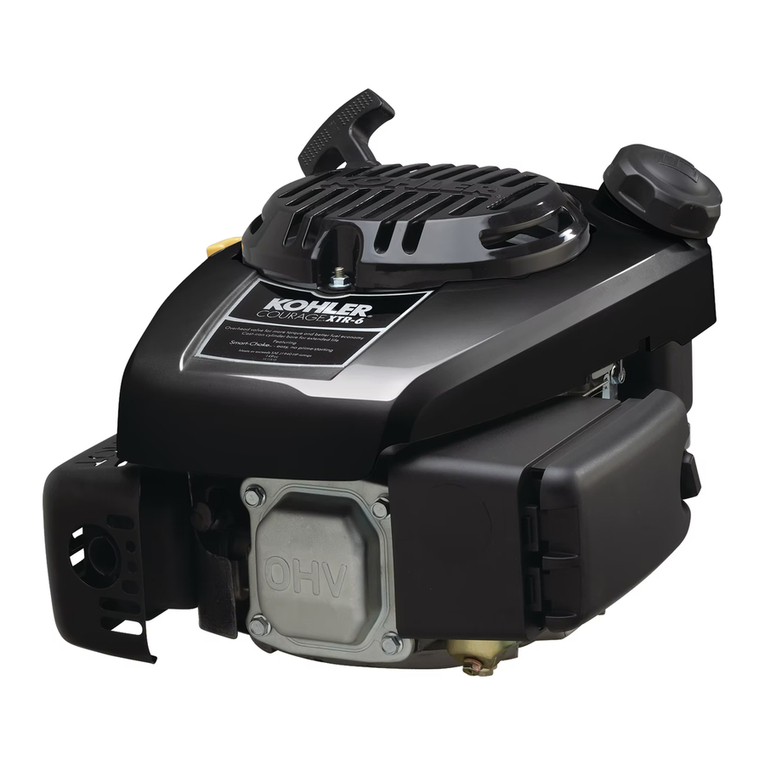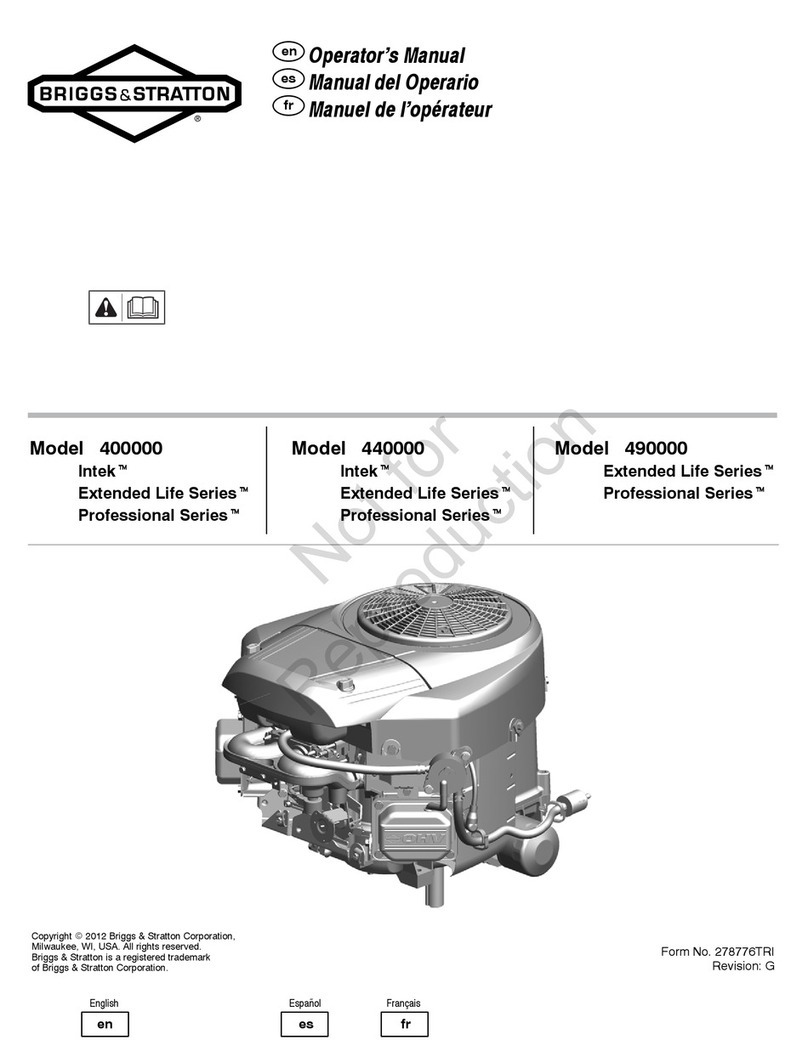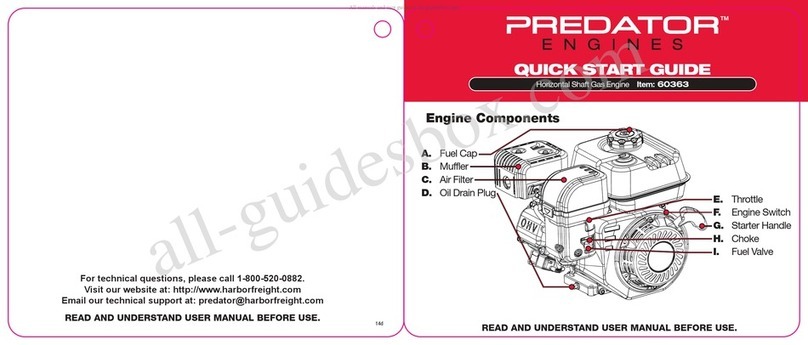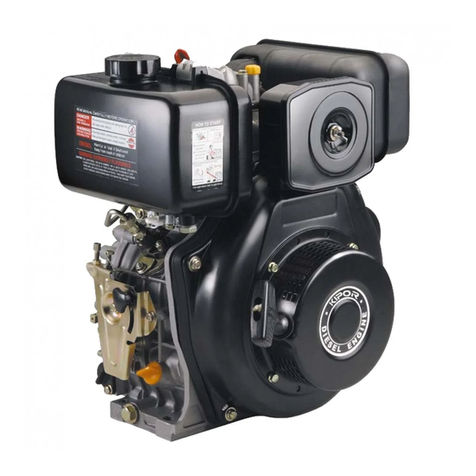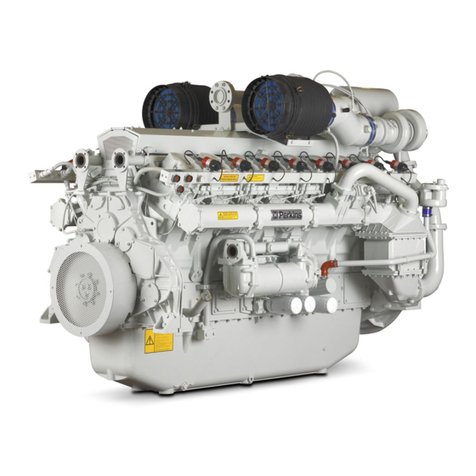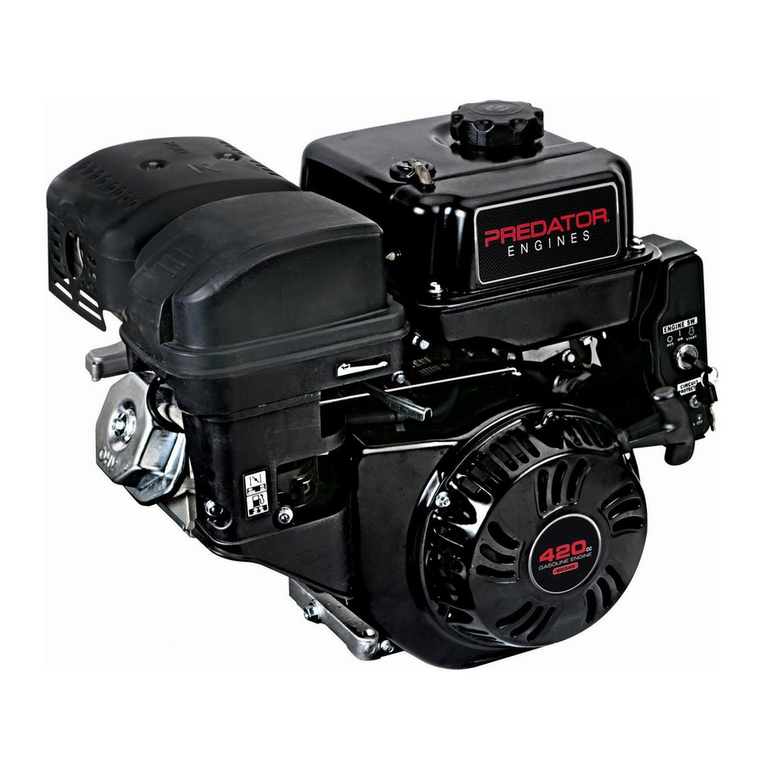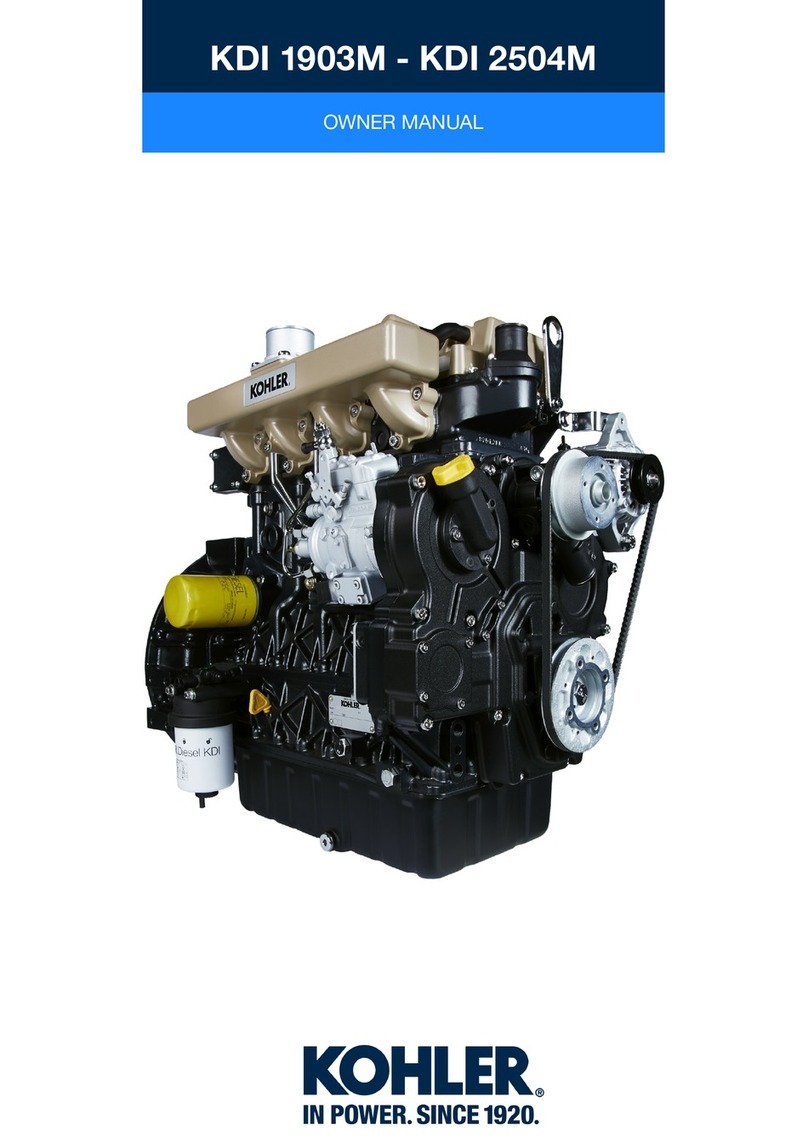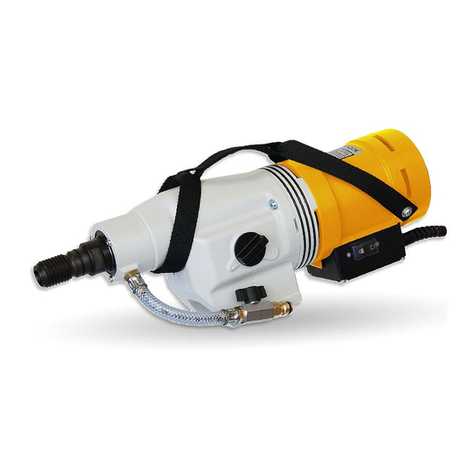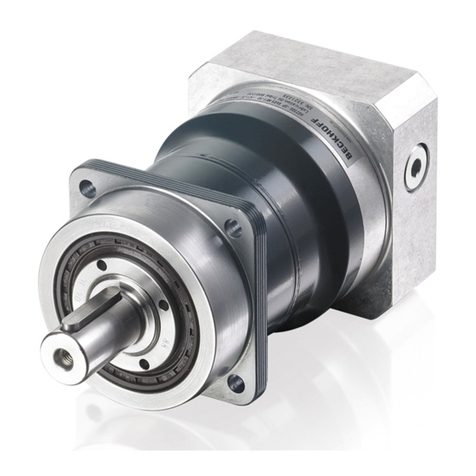Shanghai Diesel Engine SC9DF User manual


Operation and Maintenance Manual
SC9DF Series Diesel Engine
Shanghai Diesel Engine Co., Ltd.
March, 2010

Precautions
1. The Operator of diesel engine is obliged to read the operation and maintenance instruction
carefully, and strictly follow the technical operation and maintenance procedure specified by
the instruction.
2. As ECU, common-rail pipe, fuel pump and injector are precise parts, any user is not allowed
to regulate and remove these parts without permission. Otherwise, the relevant commitment
services arising therefrom will be the sole responsibility of the user.
3. The diesel engine is forbidden to run without air filter, in order to avoid damage to the engine
due to unfiltered air entering the cylinder.
4. When cleaning diesel engine, it is not allowed to inject water directly at the sensor and
harness connectors with high pressure water gun,in order to prevent the sensor and ECU
burning out due to internal circuit breaks.
5. Overhaul of all the components and parts of the electrical control system shall be conducted
by professionals.
6. Notes for quality information feedback of diesel engine
In case the diesel engine is running abnormally or in disorder, users should report to the call
center of our company in terms of repairs and services by contact way provided in Warranty
cards, and provide the information about the model, order number, operating conditions,
cumulative running time of the diesel engine, when and where the failure occurs , so that we
can provide you with better services.
7. Notices for repair and replacement of the diesel engine parts:
Users shall follow the Repair & Maintenance Manual of SC9DF Series Diesel Engine in the
process of repair; Please purchase the parts subject to the specifications of parts catalogue of
the diesel engine, and only adopt the products approved by our original equipment
manufacturer in order to ensure performance, reliability and service life of the diesel engine.

Foreword
The SC9DF series diesel engine, an electronic-controlled four-valve diesel engine of high power, is
newly developed by Shanghai Diesel Engine Co., Ltd. and well-known foreign engine consulting
company on the basis of the D9 series diesel engine with advanced design concepts and technology. It is
compliant with the China Ⅲand Ⅳemission regulations. Featuring large power, good economy, good
reliability as well as convenient operation and maintenance, the engine is an ideal power for various
on-road and off-road vehicles.
The instruction mainly introduces the technical specification, operation, maintenance and common
troubleshooting, in hopes of offering related guidance to users.
Users also have to read the Repair & Maintenance Manual of SC9DF Series Diesel Engine for removal,
installation and repair of the diesel engine, and purchase relevant parts in terms of Parts Catalogue of
SC9DF Series Diesel Engine.
Users shall use appropriate fuel, lube oil and coolant as required in this instruction.
Users shall operate and maintain the diesel engine according to the requirement of the instruction, and
keep periodic maintenance records.
The instruction shall be always with the diesel engine and be passed to the new user when the engine is
transferred.
Comments on errors, omissions and improvements of the instruction will be appreciated.
Please send your letters to the R&D center of the company, ZIP: 200432.

Operation and Maintenance Instruction of SC9DF Series Diesel Engine
Contents
1 General
Model identification of SC9DF series diesel engine
Acronym and abbreviation definitions
Nameplate of the diesel engine
Outline drawing of SC9DFQ3 diesel engine
2 Main technical and performance specification of the diesel engine
Main technical specification of SC9DFQ3 diesel engine
Main performance parameter of SC9DFQ3 diesel engine
Main technical parameter of SC9DFQ3 diesel engine
Main bolt tightening specification of SC9DFQ3 diesel engine
Other technical requirements
3 Running and operation of the diesel engine
Startup of the diesel engine
Running the diesel engine
Running and operation of the diesel engine brake
Shutting down the diesel engine
Working scope of the diesel engine
4 Maintenance of the diesel engine
4.1 Maintenance sheet
4.2 Maintenance record sheet
4.3 Routine inspection and maintenance
4.4 Maintenance per 10,000 km, 250 h or 3 months
4.5 Maintenance per 20,000 km, 500 h or 6 months
4.6 Maintenance per 40,000 km, 1,000 h or 12 months
4.7 Maintenance per 80,000km, 2,000 h or 2 years
5 Failure Diagnosis & Treatment
Annex 1 Maintenance record sheet

Chapter 1 General
1.1 Model Identification of Diesel Engine
The diesel engine model denotes the following meanings:
SC 9 D F □ □ □
Example: SC9DF375Q represents 114 series 9-liter electronic-controlled four-valve vehicle diesel
engine of 375 HP compliant with China III made by Shanghai Diesel Engine Co., Ltd.
1.2 Acronym and abbreviation definitions
CRS Electronic-controlled High Pressure Common-rail System
ECU Electronic Control Unit
PCV Fuel Pressure Control Valve
TWV Two-way solenoid valve
Hg Mercury Column
kg Kilogram
kPa Kilopascal
kW Kilowatt
L Liter
MPa Megapascal
N Newton
N.m Newton. meter
Ppm Parts per million (number)
r/min Revolutions per minute
Emission standard
Application
Four-valve
114 series
Diesel engine emission (L)
Shangcai Power
Diesel engine power (horsepower)

1.3 Nameplate of the diesel engine
The nameplate of the diesel engine lists the special information of the diesel engine, which serves as the
main basis for the user to purchase the maintenance parts and for our company to conduct after-sale
technical service.
1.4 Outline drawing of SC9DF375Q3 diesel engine
Intake Side view
Ai i
Fuel inlet joint Fuel return
Compressor
Water drain
Exhaust outlet
Compressor air
outlet
Compressor air
inlet releasing
joint
Compressor
air inlet
j
oint
Z1/8 (for Oil
pressure
Fuel filter
Oil dipstick
M22×1.5
(
for electric heatin
g
)

Exhaust side view
Top view
En
g
ine water outlet
Warm water outlet
Flywheel
housing
Starting
motor
Water
drain
Oil drain
plug
Oil filte
r
Oil temp. sensor joint M15
Engine
w
ate
r inl
et
Output pulley
A
ir Bleedin
g
j
oint
Water filter control
i
h
Compressor air outlet
Compressor ai
r
inl
et
Turbine
outlet
Oil filler
Engine air
inlet

Chapter II Main Technical & Performance Specifications for Diesel Engine
2.1 Main technical specifications
1 Type Four stroke, water-cooled, in-line, charged and
inter-cooled intake air
2 Number of cylinders 6
3 Number of valves per cylinder 4
4 Bore × stroke, mm 114×144
5 Displacement, L 8.82
6 Fuel injection equipment High-pressure common rail
7 Compression ratio 17.3
8 Ignition order (from free end) 1-5-3-6-2-4
9 Crankshaft rotation direction (facing
flywheel end) Counterclockwise
10 Starting method Electric startup
11 Lubrication method Composite lubrication
12 Cooling method Forced circulation
13 Longitudinal
inclination allowed, °Forward/backward 25
14 Transverse
inclination, °
Exhaust side/intake
side 30
2.2 Main performance parameters
Unit SC9DF375Q3 SC9DF340Q3 SC9DF320Q3 SC9DF290Q3
Rated power kW 276 251 236 215
Rated speed r/min 2200
Max. torque Nm 1500 1430 1350 1200
Max. torque speed r/min 1300-1500
Idle speed r/min 700
High idle speed r/min 2500
Min. specific fuel
consumption g/kW·h ≤195
-15
Cold startup
- without aid
- with aid
℃
-35
Emission level China Ⅲ
Noise at 1m dB ≤96
Service life (B10) Km 8×106

2.3 Main technical parameters
Engine model
Technical parameters
SC9DFQ3
Valve clearance (cold state)
Intake valve, mm
Exhaust valve, mm
0.30
0.50
Valve timing (°) crankshaft angle
(Valve clearance: when intake is 0.30 mm
and exhaust is 0.55 mm)
Intake valve opening: 22.5°CA BTDC
Intake valve closing: 42.5°CA ABDC
Exhaust valve opening:69.5°CA BBDC
Exhaust valve closing: 34.5°CA ATDC
Lubrication system
Oil pressure, kPa
At idle (Min. allowance)
At rated speed (Min. allowance)
100
350
Pressure regulating valve opening pressure,
kPa 505
Filter bypass valve opening pressure, kPa 392
Highest oil temperature in oil sump, °C 95 - 122
Oil sump capacity, L (oil dipstick
“high”-“low”) 26.5-22.5
Total system capacity, L About 30
Cooling system
Thermostat
Opening temperature, °C
Full-open temperature, °C
Lift, mm
76-82
90
≥11
Top chamber temperature in water tank
Max, °C
Min, °C
95
70
Pressure of pressure cap (to adapt to the
top chamber temperature of 95°C in water
tank), kPa
50
Coolant pressure, kPa (at 2,200 r/min) 120
Coolant volume, L 12
Intake/Exhaust System
Max air intake resistance allowance (under
rated working condition), kPa (with dry air
filter)
6.2
Max pressure drop allowance from
compressor outlet to intake manifold, kPa 13.6
Max resistance allowance at the outlet of
turbocharger , kPa 10.0
Max exhaust temperature allowance, °C
750
(at the inlet of the turbocharger)
Fuel system

Max absorption vacuum of fuel transfer
pump, kPa 30
Max fuel return resistance, kPa 69
Fuel inlet flow temperature, ℃35-45
Electrical system
Min. battery capacity recommended
24V system: *
Cold start current at -18°C , A
(Reserve capacity current, A)**
900
(320)
Cold start current at 0°C, A
(Reserve capacity current , A)**
640
(240)
Starter motor
Voltage, V 24
Power, kW 7.5
* Two sets of 12V batteries are installed in series, and each cold start current is calibrated with at -18°C.
** In the case of given battery dimension, the electrode plate can determine the reserve capacity current,
which in turn determines the duration of continuous startup.
2.4 Other technical requirements
2.4.1 Fuel
Warning: the gasoline or alcohol is not allowed to be used with diesel, as their mixture may
cause detonation.
△Caution: as the parts of the fuel system are precise in size, and the fit tolerances small, it is
important to keep the diesel clean and get rid of impurities and moisture in the diesel in
order to prevent serious damage to the fuel injection pump and nozzle. Therefore, full
precipitation treatment of the diesel is necessary before using.
The quality of the diesel used by this series of diesel engines shall not be below the specification of the
national standard of light diesel fuel (GB252).
Main specifications of light diesel fuel (GB252)
Cetane number
Distillate
temperature ℃
Item
Number
≥
50%≤
90%≤
95%≤
Kinematic viscosity (20℃)
mm2/s
Sulphur content%(m/m) ≤
Moisture %(v/ v) ≤
Acidity mg KOH/ 100mL ≤
Ash %(m/m) ≤
Mechanical impurities %
Condensation point ℃≤
Cold filter plugging point, ℃≤
Flash point (close) ≥
10# 10 12
0# 0 4
-10#
3.0-8.0
-10 -5
65
-20# 2.5-8.0 -20 -14 60
Grade A
-35#
45 300 355 365
1.8-7.0
0.5 Trace 7 0.01 Non
-35 -29 45

-50# -50 -44
It is necessary to choose the diesel grade according to the working environment of diesel engine. Light
diesel fuel with high condensation point shall be used in hot regions, while that with low condensation
point in cold regions. Condensation point of diesel should be at least 10℃below the lowest ambient
temperature in the regions where the diesel engine is used, so as to ensure necessary liquidity.
In order to provide sufficient lubrication for the fuel system, the fuel viscosity should be maintained at
1.3mm2/s or above during the diesel engine is working.
2.4.2 Lube oil
As per the specification, SC9DF series diesel engine shall apply the special oil for D6114 diesel engine
provided by Shanghai Diesel Engine Company or the oil above CF level.
The oil shall be properly used according to different ambient temperatures. The range of ambient
temperatures, to which the diesel engine oil of different viscosity grades is applicable, is shown in the
following figure:
△Caution: The diesel engine oil with appropriate viscosity shall be used according to the local
environmental temperature.
△Caution: In order to ensure oil service characteristics, it is recommended to use special oil for
D6114 series diesel engine produced by Shanghai Diesel Engine Company for SC9DF series
diesel engine.
For most areas, 15W/40 CF-4 oil is recommended. For those areas where the ambient temperature is
below -15℃, 10W/30 CF-4 is recommended in order to ensure easy start-up and sufficient oil provision.
In the cold areas where the diesel engine keeps working below -23℃, and no warm-keeping measures
can be taken when it stops, 5W/50SJ/CF CF-4 oil with good low-temperature characteristics shall be
used.
△Caution: The oil with low viscosity is helpful to start up the diesel engine. Due to abrasion,
continuous use can affect the service life of diesel engine, so try not to use or limit the use of
such oil.
Oil deterioration and replacement interval
The oil should be replaced when the diesel engine has been running for 350h or the vehicle has been
driving for 22,000 km generally, while for the diesel engines working in the environments with urban
public transportation, heavy dust, highland, extremely cold weather, it should be replaced when the
diesel engine has been running for 250 h or the vehicle has been driving for 10,000 km.
△Caution: Please don't extend the oil replacement interval, or it can affect service life of diesel
engine due to corrosion, carbon deposition and abrasion.
A
ll seasons
Winter
environment
The North
Pole
environment

2.4.3 Coolant
The coolant for SC9DF series diesel engine shall be the composite liquor mixed by certain ratio of
antifreeze and DCA4 chemical additive.
As the antifreeze can prevent the coolant from freezing and increase the boiling point of coolant, we
require the antifreeze be used under any weather conditions.
Warning: Water and antifreeze both have no protection for the cooling system. It is not
allowed to separately use them as the coolant without adding DCA4 chemical additive,
otherwise, it can result in corrosion, cavitation erosion, scale depositing in the cooling
system, block of the engine vents, causing local overheat, thus to cause serious accident
such as piston scuffing, cylinder head cracking, seizure of injector, burnout of valve, etc.
Antifreeze
As specific heat and thermal conductivity coefficient of water and ethylene glycol is greater, it is
recommended to use their mixture as antifreeze in diesel engine. The contents of silicate (sodium
silicate anhydrous), oxide and acetic acid in antifreeze shall not be higher than 1,000 PPM, 5 PPM and
100 PPM respectively.
Adjust the ratio of water and ethylene glycol in order to get the antifreezes with different ice point, i.e.
freezing points. Under most climates, relation of volume ratio and freezing point of ethylene glycol and
water as follows:
Ratio of
ethyleneglycol
and water
10:90 20:80 30:70 40:60 50:50 55:45 60:40 65:35
Freezing point,
°C
-3.8 -7.5 -14.1 -22 -32 -42 -55 -64
The recommended ratio of water and ethylene glycol is 50:50, whereas, the freezing point shall reach
the lowest level (e.g. the antifreeze realizes its utmost anti-freeze ability) when water/ ethylene glycol
ratio is 32:68. Under no circumstances shall the ratio go beyond this value, otherwise, the freezing point
can arise, and the density of ethylene glycol will be over high. This may cause solid matter subside. As a
result, the sediment on the part surface of the coolant system will block the heat sink and cause leakage
of pump seal ring. The over high ratio of ethylene glycol can also degrade the thermal conducting
performance. Therefore, appropriate density of ethylene glycol in antifreeze shall be 40-60%.
In general, the ice point of selected antifreeze shall be 10℃lower than the lowest temperature of the
area where the engine is used.
The ice point of antifreeze can be checked precisely with a refractometer, or be measured with a test
paper specially designed for antifreeze.
△Caution: It is required to discard or replace the antifreeze every 385,000 Km, 6,000 h or 2 years
(whichever comes first) in order to remove those harmful chemical sediments.
DCA4 chemical additive
As water and antifreeze both have no protection for the cooling system, it is not allowed to use either of
them as a coolant.
It is recommended to add DCA4 chemical additive with specified density to diesel engine coolant. DCA4
chemical additive can protect the cooling system from cavitation erosion, corrosion and scale depositing,
and restrain and eliminate air bubbles, etc. DCA4 chemical additive and concentration test package are
available from the after-service net of SDEC. Refer to the instructions provided with this test package
before application.
△Caution: never touch the test paper with hand; keep the DCA4 chemical additive away from
contact of eyes, skins or cloths; the test should be done in a bright place without contaminating
the test paper and containers used.
2.5 Main-bolt and -nut tightening torque and methods
Table 1 Torque specification for main fastening bolt

No. Name Thread spec. Final torque (Nm) Tightening method
1 Main bearing cap bolts M16-4h6h
125±5 N·m
Final angle
210°±5°
First: 50 N·m
Second: 120-130 N·m
Third: angle 210°±5°
2 Cylinder head bolts
M14-4h6h
115±5 N·m
Final angle
240°±5°
First: 50N·m
Second: 110~120 N·m
Third: angle 240°±5°
3 Connecting rod bolts
M12×1.25
-4g6g
60±5 N·m
Final angle
150°±3°
First: 60±5 N·m
Second: angle 150°±3°
4 Flywheel bolts
M12×1.25
-5h
70±5 N·m
Final angle
25°±3°
Tightened twice alternately
First: 70±5N·m
Second: 25°±3°
5 Vibration damper bolts M14×1.5
-5h6h
100±5 N·m
Final angle
30°±3°
First: 50±5 N·m
Second: 100±5 N·m
Third: angle 30°±3°
6 Fuel pump gear nut M14×1.5 64±5 N·m 64±5 N·m
7 Air compressor power
output drive gear nut M16 134±13 N·m
8 Fuel pump flange nuts and
bolts M8 32±3 N·m
9 Oil pump bolts M8 32±3 N·m
10 Injector bolts M8 31±2 N·m
11 Injector inlet pipe nuts M24 52.5±2.5 N·m
12 Engine support bolts M12 112±10 N·m
13 Rocker arm shaft bolts M10-6h 55±3 N·m
14 Air compressor power
output gear nuts M12 77±7 N·m
15 Flywheel bolts M12 112±10 N·m
16 Turbocharger bolts M10 45±4 N·m
17 for fastening the Alternator
pulley nut M16 80±8 N·m
18 Fuel filter 13/1″M16 Turn 3/4 circle
after contact
19 Inlet and outlet joint nuts of
fuel filter M14 24±3 N·m
20 High pressure fuel pipe joint
nuts M12 45±3 N·m
21 Fuel pump fuel return banjo
bolts M10 10±2 N·m

22 Fuel pump fuel inlet banjo
bolt M14 18±2 N·m
23 High pressure common rail
fuel return banjo bolt M10 16±2 N·m
24 Fuel filter sensor M11 20±3 N·m
25 Lifting plate bolts M12 77±6 N·m
26 Oil filter head M32 40±10 N·m
27 Oil drain plug M18 80±4 N·m
28 Heater plug in oil sump M22 80±4 N·m
29 Oil pressure regulating
valve M34 80±4 N·m
30 Oil suction pipe (flange) M10 45±4 N·m
31 Oil suction pipe (support) M6 9±1 N·m
32 Rocker arm adjusting
screws and nuts M10 45±4 N·m
33 Turbocharger oil inlet pipe M12 32±4 N·m
34 Fuel bump idle gear clamp
bolt M8 32±3 N·m
35 Mid cylinder head cover
bolts M8 24±3 N·m
36 Cylinder head cover bolts M8 24±3 N·m
37 Exhaust manifold bolts M10 50±4 N·m
Caution: the connecting bolt can be used once.
For bolts unlisted in Table 1, the torques in Table 2 can be applied. Tapered screw plug is tightened with
the torques in table 3, and pipe banjo bolts are tightened according to the torque in table 4.
Table 2 Approximate tightening torque for common screw plug and standard bolt
Performance
level 8.8 10.9
Torque TorqueDiameter of bolt
(mm) Cast iron Aluminum Cast iron Aluminum
6 9 7 14 11
8 25 18 32 25
10 40 30 60 45
12 70 55 105 80
14 115 90 160 125
16 180 140 240 190
18 230 180 320 250
Note: the torque values given in the above table only applies to the threads of bolts and nuts properly
lubricated.

Table 3 Recommended tightening torque for tapered screw plug
Specification of screw plug Torque N⋅m
Thread Effective thread (outer
diameter) Cast iron or steel Aluminum
1/16 8.1 15 5
1/8 10.4 20 15
1/4 13.7 25 20
3/8 17.3 35 25
1/2 21.6 55 35
3/4 26.7 75 45
1 33.5 95 60
11/442.2 115 75
11/248.3 135 85
Table 4 Recommended tightening torque for pipe banjo bolt
Specification M8×1 M10×1 M12×1.25 M14×1.5 M16×1.5 M18×1.5 M20×1.5 M22×1.5
Torque (N⋅m) 13 22 32 45 50 65 85 105
Note: The torque described above is applicable to steel, cast iron or aluminum substrate.

Chapter III Running & Operation of Diesel Engine
Oil, fuel and coolant with suitable specifications shall be chosen according to specific application
environment and conditions before running the diesel engine. The selected oil, fuel and coolant shall
comply with technical specifications as given in the Article 2.4.
Correct and reasonable application will provide a longer service life, better work performance and high
economical efficiency for your diesel engine.
3.1 Startup of the diesel engine
3.11 Normal startup
zCheck the throttle for operational flexibility
zDisengage all the drive system, and move the transmission gear (if equipped) to the neutral
position.
zWait until the preheating indictor lamp goes out.
zNo need to press the throttle when starting.
zCaution: The start time shall be less than 30 s to avoid damages of the starting motor. The interval
of two startups is 2 mines (only for the electrical starting motor).
zThe time of each startup is usually 2-3 s.
zCheck preheating device and electrically controlled fuel system if the engine is failed to start to run
after three consecutive startups.
zThe diesel engine will run at the idle speed of 700 RPS after being started. (Under low temperature
condition, the idle speed will go up automatically to speed up the engine warm-up. The diesel
engine speed will automatically come back to normal idle speed when the water temperature
reaches 60℃)
zThe oil pressure must be indicated on the pressure meter within 15 s after the engine has been
started, if not, immediately turn off the diesel engine in order to avoid being damaged. And check the
oil level of diesel engine.
zWhen the diesel engine is started from cold state, increase the speed slowly to ensure full
lubrication of all bearings; do not fully step down the throttle pedal at unloaded condition.
3.1.2 Low temperature startup
Some diesel engines of this series are equipped with an auxiliary intake pre-heater, which is used for
startup at a low temperature. It can heat up the intake air automatically when the temperature of the
coolant in the diesel engine is below -10℃.
zInsert the key and turn it from OFF position to ON position before starting to electrify the pre-heater,
and the indicator lamp lights up.
zTurn the electrical key from ON position to START position to start the diesel engine when the
indicator lamp blinks and goes off.
△Caution: SC9DF series electrically controlled diesel engine can usually be started quickly and
run smoothly even in a very low temperature environment. For those machines to be stopped
outside, the winter protections and specific warm-up time shall be provided. The lube oil, fuel
and coolant must be used properly according to different temperature ranges of local areas
where the vehicle will be working.
3.1.3 Startup after long time parking or oil replacement
zAfter the oil has been replaced, or the vehicle has been parked for more than 30 days, refill the
lubrication system, and then start the diesel engine.
zClose the throttle in case the diesel engine starts by ignition.

zRotate crankshaft by the starter motor until the oil pressure gauge reads the pressure.
zOpen the throttle.
zStart the diesel engine as per the start procedures specified in 3.1.1 (Normal start) or 3.1.2 (Low
temperature starting).
zDischarge the air in the fuel system according to descriptions in article 4.4.2.
z
3.2 Running the diesel engine
3.2.1 New diesel engine running-in
New diesel engines or those after overhaul can be put into full-load service only after a specific period of
running-in, otherwise, their running reliability and service life will be affected unfavorably.
Automobile diesel engine: For the first running-in of 160 km, the speed of diesel engine shall be
controlled within 1,500-1,800 r/min, running-in at high gear. And in this period, its continuous running at
idle speed shall not be longer than 5 min anytime.
Non-vehicle diesel engine: For the non-vehicle diesel engine, it shall be run according to the following
requirements in the first three hours after assembly:
1. Continuous running time of the diesel engine at idle speed shall not be more than 5 min anytime.
2. It's appropriate to run under rated speed and 75% of full load for the diesel engine.
3. Continuous full-load and full speed running shall not be longer than 5 min at any time.
△Caution: the oil or oil filter shall be replaced after new diesel engine is running for 80-100 h or
1,500-2,500 km accumulatively.
3.2.2 Normal operation
Continuous full-throttle running at the speed lower than maximum torque speed shall not longer than 1
min.
zCheck oil pressure and coolant temperature frequently during engine operation and see Chapter II
"Main Technical & Performance Specifications for Diesel Engine" for details. If the running-in
parameters is not met, stop the engine for check, or repair it if necessary.
△Caution: The diesel engine will be damaged in case of continuous operation when the coolant
temperature is lower than 60℃or higher than 100℃.
zIn the case of too high temperature of coolant, decrease the engine speed or change to the lower
gear or both until the temperature recovers to the range of normal working conditions, otherwise,
find the cause and trouble shoot the problems as specified in Chapter V "Troubleshooting
Guidelines".
zMost failures will develop with a sign, i.e. observe the performance change of the diesel engine,
sound of abnormity, or check if one of following signs occurs. If so, it's necessary to repair it.
-misfire -abnormal smoke color
-vibration -power loss
-abnormal noise -oil consumption increases
-sudden change of oil pressure or -fuel consumption increases
coolant temperature
Caution: the diesel engine will be damaged in case of running at overspeed (the speed
exceeds the maximum value under empty load).
In order to avoid overspeed, the gear box and brake shall be used to control the speeds of vehicle and
diesel engine when the vehicle is driving down the slope.

3.3 Operation and control of diesel engine brake
Some of SC9DF series diesel engines are equipped with in-cylinder braking system, which can be used
to reduce the loads on the vehicle braking system effectively, so that you can decrease and control the
vehicle speed without pressing down the accelerator pedal, especially when driving down the slope, and
avoid overheating of breaking drum to ensure driving and life safety, as well to reduce vehicle running &
maintenance costs.
Braking system can provide "High" or "Low" braking capacity, which can be controlled by selecting the
switch ("OFF", "LOW", "HIGH"). The system must meet the following three conditions during operation:
1)The switch is in ON position.
2)The clutch is in OFF position.
3)Fuel shut-off instruction exists.
That's to say, when driving, the brake switch is in ON position and the clutch is in OFF position; the
braking system will operate automatically as long as you release the accelerator pedal; when you step
down the accelerator pedal again, the braking system will stop working automatically; therefore, the
system can help you decrease the vehicle speed easily.
△Caution: The following principles shall be followed during activation of the brake:
1) Make sure the engine has been warmed up before activating the brake. Make sure to shift the
switch from LOW to HIGH.
2) Prohibit activating the brake during driving on wet road; otherwise, the vehicle will skid and
be out of control.
3) Suitable brake gears shall be chosen for different road conditions to ensure that enough
deceleration capability will be provided for the vehicle to run at a suitable speed: the braking
capability is better when the engine is operating at a high speed, shift to lower gears, but the
overspeed should be avoided. (it is recommended to choose the same gear when driving up
and down a slope)
4) Suitable brake gears shall be chosen according to quickly changed road condition: the brake
should be deactivated until the road condition has been improved in case of the vehicle
skids with the brake being activated; when reactivating the brake, the same sequence from
"Low" to "High" shall also be followed.
3.4 Stopping the diesel engine
zAfter the diesel engine starts has run with full loads, keep it running for 3-5 min at idle speed before
stopping it, so that the diesel engine can cool down gradually and evenly.
zTurn the diesel engine ignition key switch to "OFF".
zUnless it is necessary, no emergency stop should be done while running under high loads, or
serious failures will occur due to overheating.
3.5 Working range of the diesel engine
△Caution: The diesel engine can operate under the transitional working conditions at a speed
above the maximum torque speed, which is in line with recommended strategy for economical
running. If the vehicle is running with full throttle at a speed below the maximum torque speed
for a long time, this will shorten the engine service life, causing overhaul or cause serious
damage to the diesel engine, which is treated as an abuse behavior.
△Caution: The diesel engine will be operating at a speed below the maximum torque speed
during shifting gears. This is due to different transmission ratios among transmission gears.
However full-throttle running at a speed below the maximum torque speed shall not be longer
than 1 min.
△Caution: The diesel engine will be damaged seriously if the speed exceeds 2,500 RPM. When
sliding from the steep slope, control the vehicle and diesel engine speeds with combination of

transmission gear and diesel engine, or with the foot brake; the exhaust brake function shall be
applied if equipped.
Chapter IV Repair & Maintenance of Diesel Engine
4.1 Repair and Maintenance schedule
It is recommended to maintain the SC9DF series electronically controlled diesel engine according to the
"Repair and Maintenance Procedures" specified in this Section. The maintenance interval shall be
shortened appropriately in case of the diesel engine is always operating at the ambient temperature
lower than -18℃or higher than 38℃, or running in dust environment, or working in the case of frequently
stopping vehicle.
Maintenance Schedule for SC9DF Series Electronically Controlled Diesel Engine
Daily maintenance
Every 10,000
kilometers, 250
hours or 3 months
Every 20,000
kilometers, 500
hours or 6 months
Every 40,000
kilometers, 1,000
hours or 1 year
Every 80,000
kilometers, 2,000
hours or 3 years
Replacement
●Oil
●Oil filter cartridge
●Oil
●Oil filter cartridge
●Diesel filter
(include fine filter
and oil-water
separator)
●Oil
●Oil filter
cartridge
●Diesel filter
(include fine filter
and oil and water
separator)
●Oil
●Oil filter
cartridge
●Coolant
●Diesel filter
(include fine filter
and oil-water
separator)
Adjustment
●Valve clearance ●Valve clearance
check
●Check oil level
●Check coolant
level
●Check belt for
being damaged
●Check drive
system of the fan
●Check oil and
water separator
●Visually check for
leakage
●Fastening
condition of
attachments
●Check smoke
color of the engine
●Check indicator
light for failure
●Air filter
●Air intake system
●Air intake
intercooling system
●Wiring harness
●Sensor
●Air filter
●Air intake system
●Air intake
intercooling
system
●Coolant (DCA4,
anti-freeze fluid
concentration)
●Air bleed of fuel
system
●Wiring harness
●Sensor
●Air filter
●Air intake
system
●Air intake
intercooling
system
●Coolant (DCA4,
anti-freeze fluid
concentration)
●Air bleed of fuel
system
●Fan
transmission
bearing
●Belt tensioner
bearing
●Belt tension
●Wiring harness
●Sensor
●Air filter
●Air intake
intercooling
system
●Air compressor
●Coolant (DCA4,
anti-freeze fluid
concentration)
●Fan hub
●Fan
transmission
bearing
●Belt tension
pulley bearing
●Belt tension
●Wiring harness
●Sensor
●Supercharger
●Damper
The users should make periodical maintenance and keep the record in the format specified in Annex 1.
Note: It’s recommended to make periodical maintenance needed on those items in the authorized
maintenance station.
4.2 Daily check and maintenance content
This manual suits for next models
3
Other Shanghai Diesel Engine Engine manuals

Shanghai Diesel Engine
Shanghai Diesel Engine H Series User manual
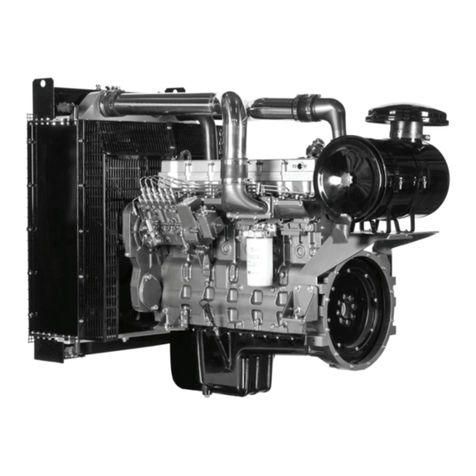
Shanghai Diesel Engine
Shanghai Diesel Engine SC9D Series User manual
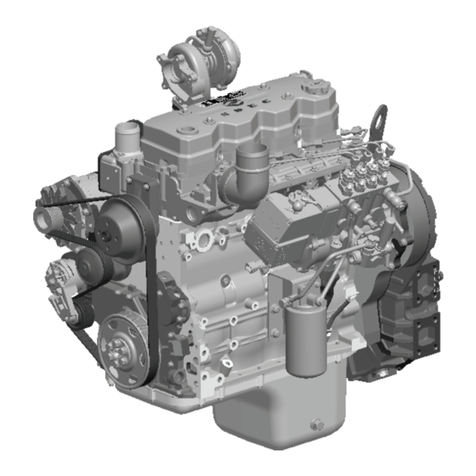
Shanghai Diesel Engine
Shanghai Diesel Engine H Series Manual
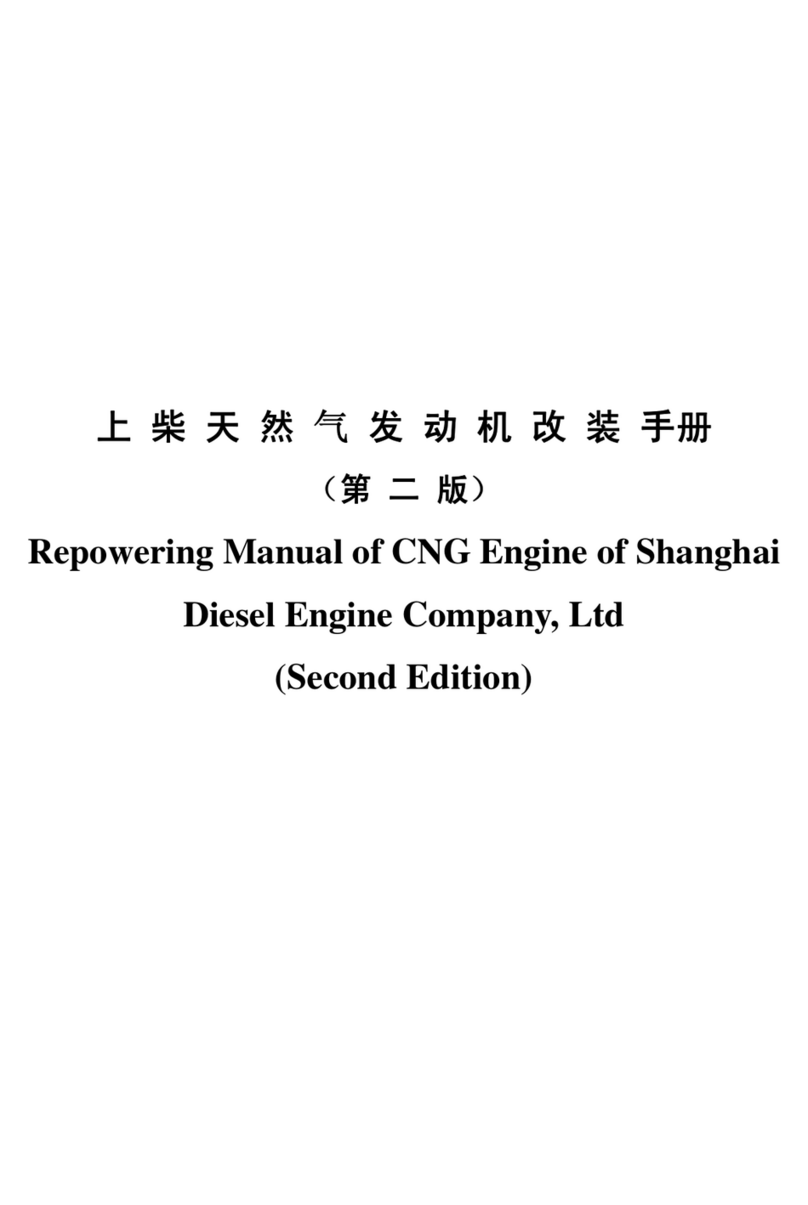
Shanghai Diesel Engine
Shanghai Diesel Engine 6114 Series User manual
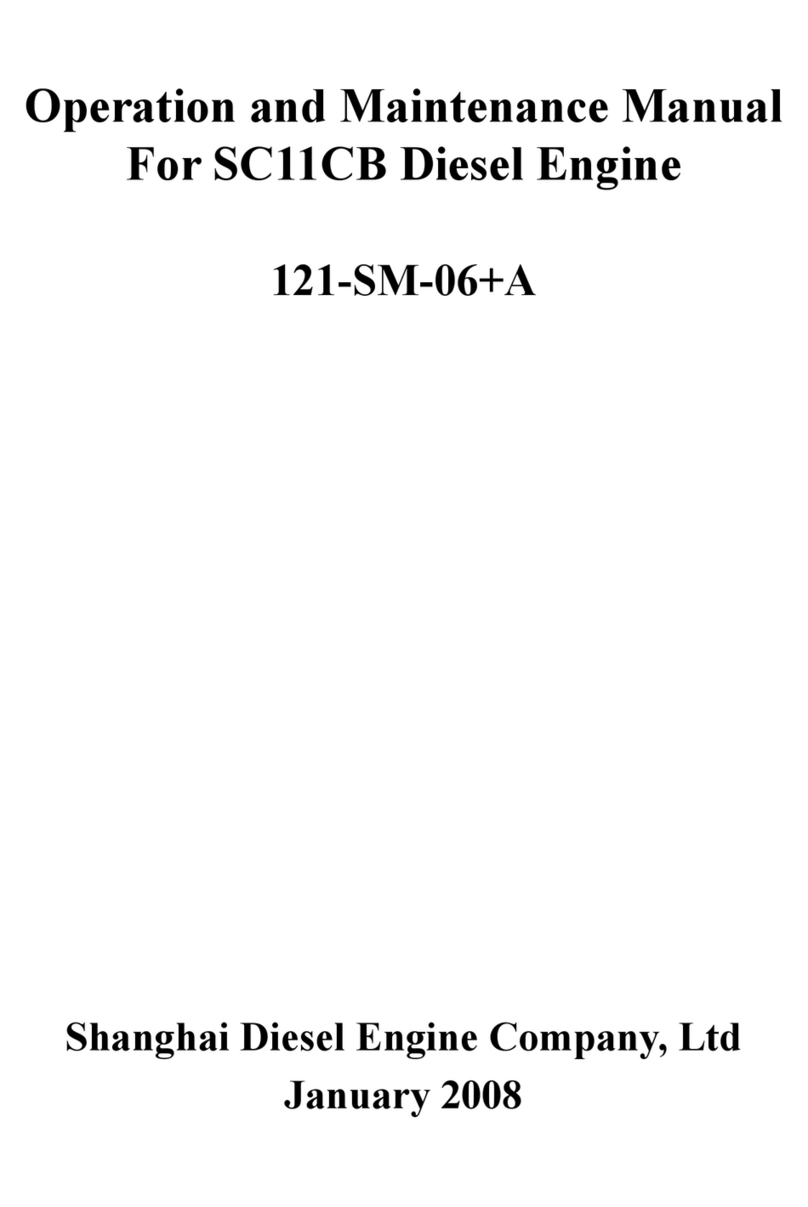
Shanghai Diesel Engine
Shanghai Diesel Engine SC11CB User manual
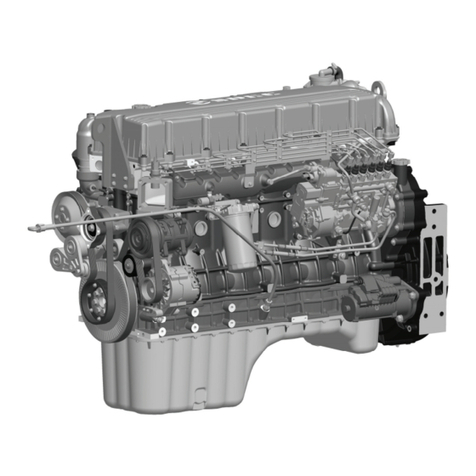
Shanghai Diesel Engine
Shanghai Diesel Engine E Series User manual
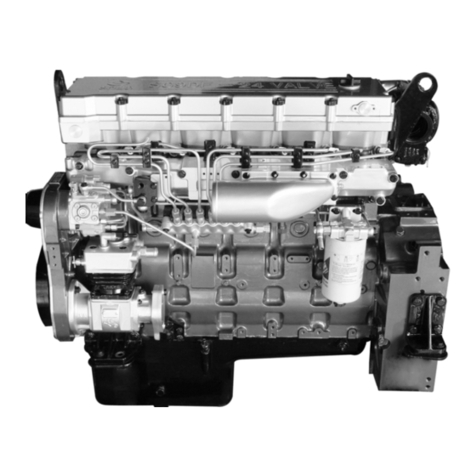
Shanghai Diesel Engine
Shanghai Diesel Engine D Series User manual

Shanghai Diesel Engine
Shanghai Diesel Engine E Series User manual
